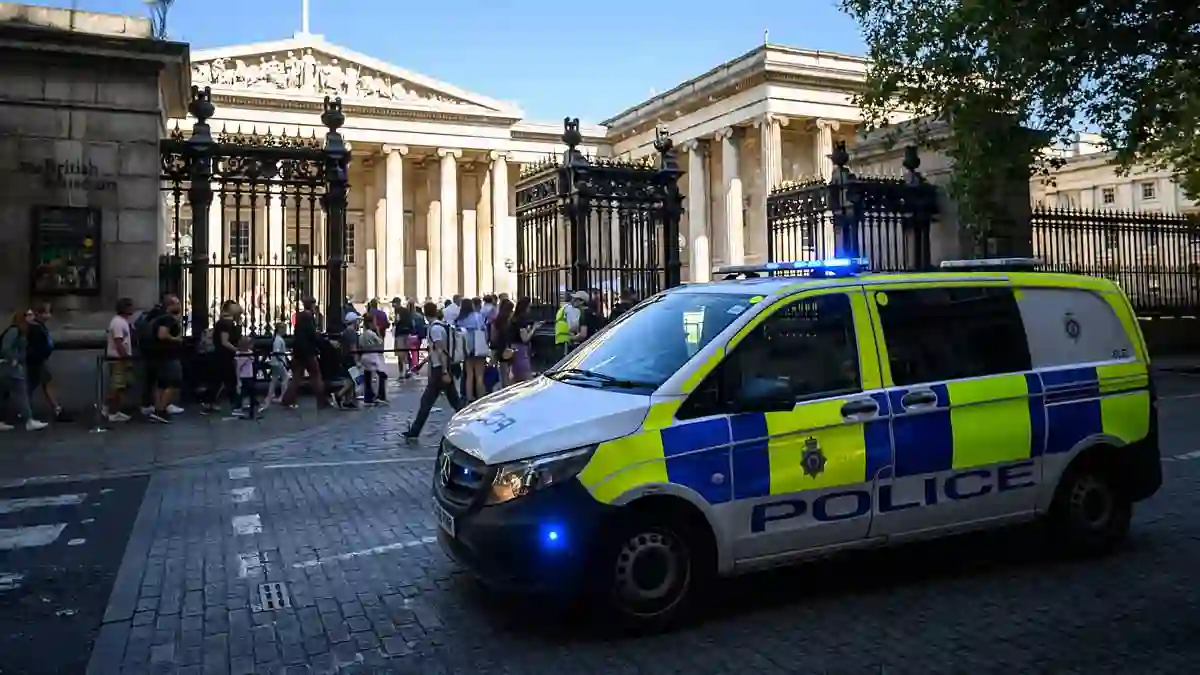Planning a sightseeing trip to London? You may want to keep an eye on your bag.
A recent investigation has uncovered some unsettling truths about the crime rates around the city’s most iconic tourist attractions—especially in Central London.
National Portrait Gallery Tops the List for Reported Crimes
According to a detailed study of police data, the area just outside the National Portrait Gallery, near Trafalgar Square, was found to be the most crime-ridden tourist zone in the capital.
Over the past year, a staggering 3,060 crimes were recorded in its vicinity—including 1,200 thefts from people.
Not far behind is the Royal Academy of Arts in Piccadilly, which reported 1,652 crimes, while the Royal Ballet and Opera House in Covent Garden logged 1,548 incidents.
The London Transport Museum, also in Covent Garden, followed closely with 1,227 crimes.
British Museum, National Gallery, and More See Alarming Numbers
Even the British Museum, the UK’s most-visited attraction, wasn’t spared—recording 1,173 crimes near its gates.
Trafalgar Square’s National Gallery wasn’t far behind with over 1,000.
Other popular spots including The Monument, British Library, Cutty Sark, Big Ben, and Westminster Abbey also made the top twenty.
Some less central but still iconic attractions—like St. Paul’s Cathedral, Madame Tussauds, and the Tower of London—were also listed, with crime figures ranging from the high 100s to low 500s.
Safer Areas Found Further from Central London
If you’re looking for peace of mind, you might want to plan a visit further out.
The safest areas were found outside Central London, including the London Wetland Centre in Barnes (just six reported crimes), Kensington Palace (19), and Eltham Palace (23).
Greenwich’s Old Royal Naval College and National Maritime Museum also showed low crime stats.
Violent Incidents Add to Public Concern
This isn’t just about pickpocketing. Last month, veteran TV broadcaster Selina Scott was attacked in broad daylight just steps away from the Royal Academy.
She was struck in the knee and targeted by a gang trying to steal her bag.
While she fought them off, they still managed to grab her purse.
This violent encounter isn’t isolated. Across London, more than 30 areas have now been flagged as hotspots for theft, anti-social behavior, and street crime—prompting increased police patrols.
Police and Politicians Respond to Growing Safety Crisis
The Metropolitan Police have begun rolling out more visible patrols and undercover operations in crime-heavy areas, especially along high streets and near major attractions.
According to Deputy Commissioner Matt Jukes, they’re now arresting 1,000 more criminals each month, and neighborhood crime has dropped 19%.
Despite these efforts, political leaders continue to clash over the situation. Susan Hall, of the City Hall Conservative Group, criticized Mayor Sadiq Khan for cutting police budgets.
She said: “Khan is happy to oversee huge police cuts, denying our officers the resources they need and the public the security required to keep them safe.”
The mayor’s office, meanwhile, insists that their new “neighbourhood-first” strategy is meant to restore trust and tackle high-impact crime more efficiently.
Former Detectives and Experts Slam the Capital’s Security
Not everyone is convinced. Former New Scotland Yard detective Peter Bleksley described Central London as a “crime-ridden cesspit,” claiming that the force is now so stretched private security teams are being brought in to help.
He warned that everything from pickpocketing to violent crime is “driving people away from the capital.”
Academic voices have also joined the criticism.
Professor Matt Goodwin from the University of Buckingham didn’t mince words, writing that “London is over” as a safe, desirable city.
He pointed to rising shoplifting numbers, increased homelessness, and a disturbing rise in sexual offences.
Crime Mapping Shows Central Tourist Zones Most at Risk
The data behind the investigation was collected using official Metropolitan and City of London Police records, tracking crimes that occurred within 250 meters of tourist sites.
Only the closest attraction was counted per crime to avoid overlap, and the categories included everything from theft and violence to drug offenses and burglary.
This deep dive paints a sobering picture of the state of safety near London’s top tourist landmarks.
And while the venues themselves may be secure—with their own CCTV, trained staff, and tight coordination with law enforcement—the public areas just outside their doors tell a different story.
